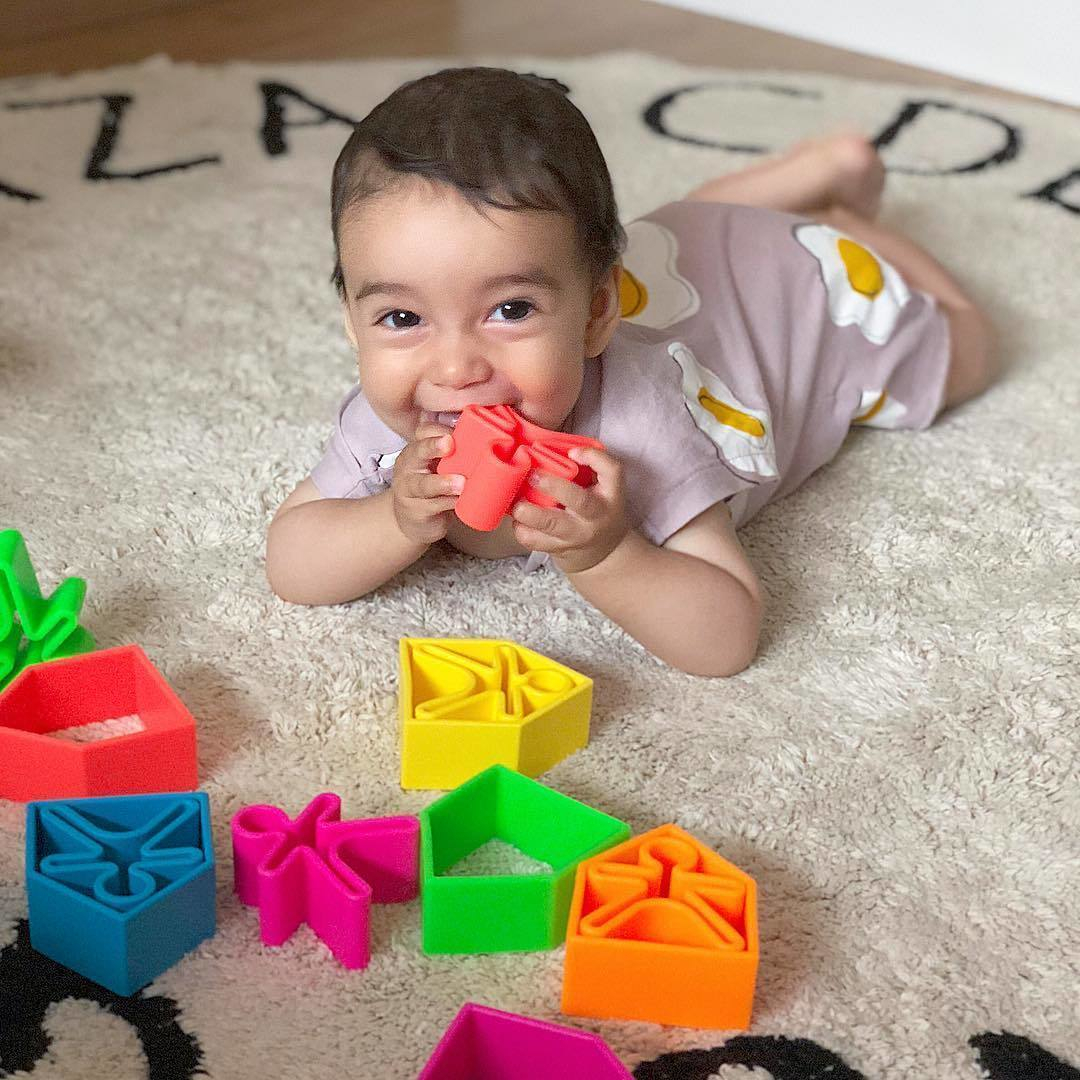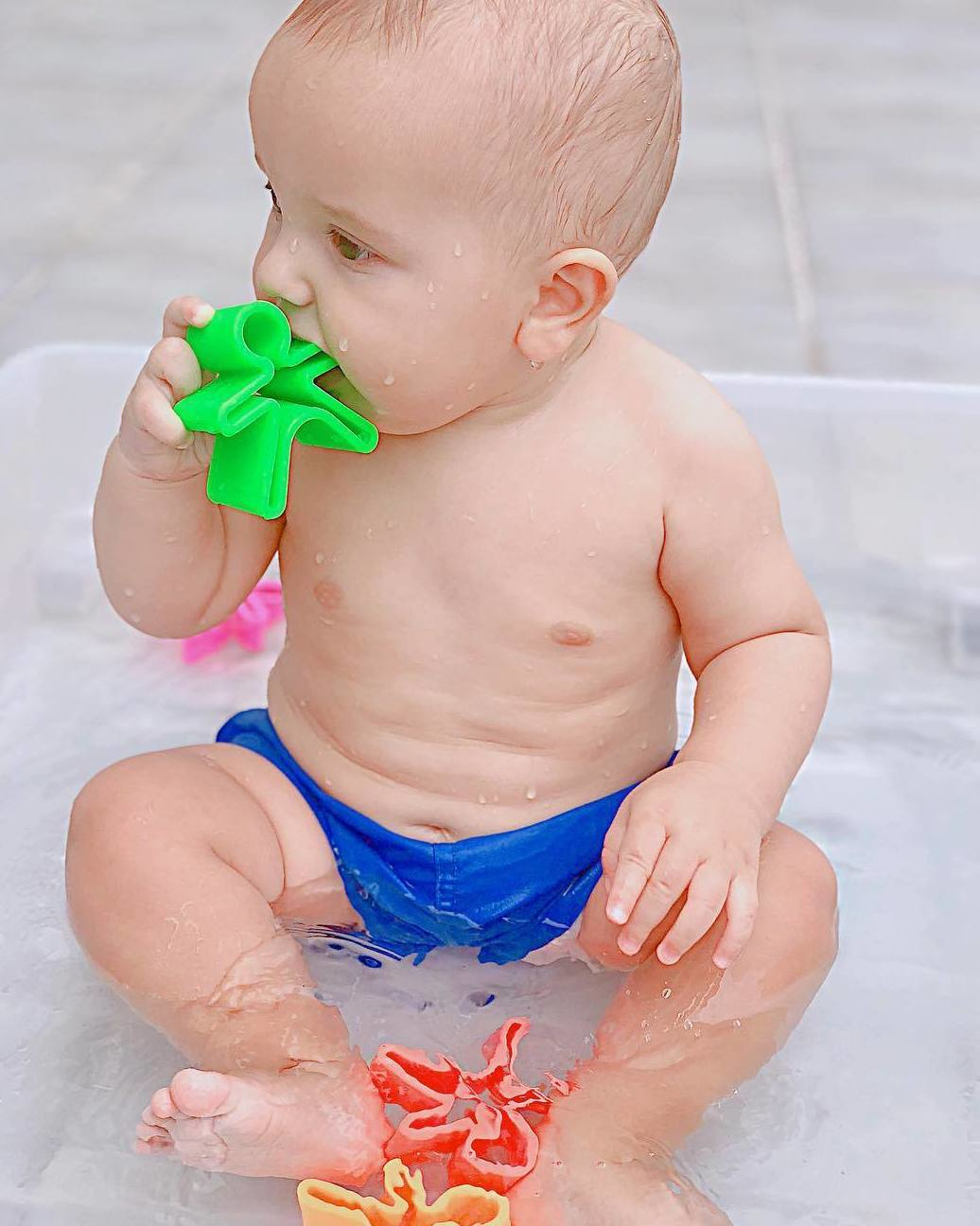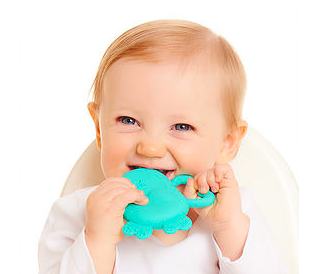Things you must know about baby teething and teether
/Teething can be one of the least fun parts of early development. Symptoms vary, but some baby can lose sleep because of teething, cry in pain, or develop rashes from drooling while teething. You may start to think about giving your baby teether. Then you will asking yourself, when I should give your baby teether? Does baby really need teether? What kind of teether I should choose?
Things you must know about baby teething and teether
Does baby really need teether?
Teeth growth can cause pain and will cause a lot of difficulties for babies who feel sick, as well as their parents who took care of them. Your baby may cry a lot, saliva production will be more than usual, sometimes they also look nervous and fussy. Some babies even can’t sleep at night. However, there are some babies who don't seem to be affected by this condition.
Read more: 10 Milestones in first year of baby’s life
Baby teething toys are beneficial, not only for helping relieve a baby’s pain, but also for helping a baby’s cognitive development. A teether allows a baby to develop motor-skills. A baby must see the toy, grab it, and guide it into the mouth in order for it to be chewed on. So as a good parents, you need to go through different teether reviews before purchasing it.
When you should give baby teether?
If you notice your little one trying to chew on everything in sight, it may be time for some teether. Teething can start as early as 3 months old and as late as 14 months old. When your baby starts teething and which teeth develop first depends on family history and genetics.
Two lower front teeth are usually the first teeth that appear. And followed by two upper front teeth. Most children will have 20 teeth before they are 3 years old.
What kind of teether I should choose for my baby?
Good quality teething toys will be durable, BPA-free, easy for your baby to hold on their own, and safe to chew on. Teether also shouldn’t have any hard edges. Some teether are designed for pain relief and play!
Stage 1 teether for infants aged about 4 months, teether function to stimulate dental growth.
Stage 2 teether for babies around 6 months old, the shape of the teether is denser, its function is to stimulate the next tooth growth.
Stage 3 teether usually used for babies who already have 2 teeth or more, the teether is denser, but soft when bitten, the texture is more rough, there is even a wavy, teether function at this stage to stimulate further tooth growth.
Stage 4 teether is a teether with a texture that is more coarse and varied. This teether is used by babies whose biting ability is getting stronger, because they already have several teeth. In addition to stimulating tooth growth, teether can also trains their motor movements to chew.
Read more: How to choose a perfect teether for my baby?
LOULOU Lollipop teether - Novelty teether are essentially regular teether, but come in all kinds of fun shapes and sizes. They can literally be made to look like anything which can be fun for you and your baby!
Dena toys, teether and playmate, all in one. Thanks to its soft material and its design, with Dena toys your baby will begin to stimulate her creativity from the first day. Dena toys are very safe and very useful for psychomotor development.
Read more: What can you play with Dena toys? You'll never think about it!
While choosing a teether, look for a teether that the baby will be able to hold and safely put in their mouth. Matchstick Monkey teeter is a perfect teether since they have three collection which come with three different size, not too big or too small, safe for your baby.
Hashtag Kidz teether, super hygienic because you can flip it out to make sure teether surface will always clean, really suitable for baby who enjoy traveling. Additional teether case are available to purchase, double protection.
Always supervise a baby while they are using a teether. While choosing a teether, look for a teether that the baby will be able to hold and safely put in their mouth. Do not use items that are not meant to be teether as a toy, especially toys that have small parts that could fall off and be a choking hazard. And don’t forget to regularly clean your baby’s teether!
“I am the who teething, so why are we both crying?”








